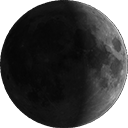
An artist’s view of Rosetta, the European Space Agency’s cometary probe with NASA contributions. The spacecraft is covered with dark thermal insulation in order to retain its warmth while venturing into the coldness of the outer solar system, beyond Mars orbit.
Image Credit: ESA
The Rosetta spacecraft “woke up” after a record 957 days of hibernation. The first communication from the spacecraft arrived at the European Space Operations Center in Darmstadt, Germany, at 7:18 p.m. local time (1:18 p.m. EST / 10:18 a.m. PST). The signal was received by a ground station at the Goldstone, Calif., complex of NASA’s Deep Space Network.
Rosetta, heading toward comet 67P/Churyumov-Gerasimenko, is an international mission spearheaded by the European Space Agency with support and instruments provided by NASA.
Comets are among the most beautiful and least understood nomads of the night sky. To date, half a dozen of these most heavenly of heavenly bodies have been visited by spacecraft in an attempt to unlock their secrets. All these missions have had one thing in common: the high-speed flyby. Like two ships passing in the night (or one ship and one icy dirtball), they screamed past each other at hyper velocity — providing valuable insight, but fleeting glimpses, into the life of a comet. That is, until Rosetta.
NASA is participating in the European Space Agency’s Rosetta mission, whose goal is to observe one such space-bound icy dirt ball from up close — for months on end. The spacecraft, festooned with 25 instruments between its lander and orbiter (including three from NASA), is programmed to “wake up” from hibernation on Jan. 20. After a check-out period, it will monitor comet 67P/Churyumov-Gerasimenko as it makes its nosedive into, and then climb out of, the inner solar system. Over 16 months, during which old 67P is expected to transform from a small, frozen world into a roiling mass of ice and dust, complete with surface eruptions, mini-earthquakes, basketball-sized, fluffy ice particles and spewing jets of carbon dioxide and cyanide.

